We could say that Pixar is one of the largest factories of fantasies that exist in the current film industry. A name that is synonymous of illusions for spectators and an utopian dream for those who want to dedicate their lives to the world of animation. Eduardo Martin, born in Barcelona, is one of the ten Spaniards who can say that he's working in the best computer animation film studio in the world. His duty? To make John Lasseter, Andrew Stanton and Pete Docter's ideas, come true.
-
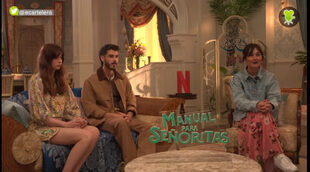
-
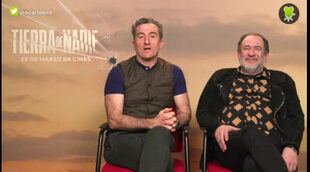
-

-
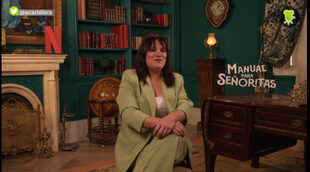
-
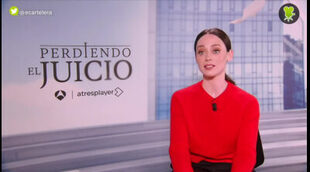
-
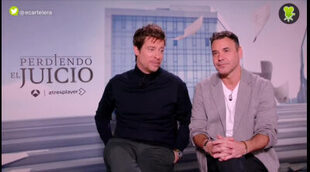
We had the opportunity to interview him on a recent visit to the studios in the quiet town of Emeryville, located about 20 miles from San Francisco. The first thing that impresses us is the facilities' XXL size where we can find, among other things, a soccer field (yes, soccer, not "football"), a basketball court, a beach volleyball court, an outdoor swimming pool and a complete gym that are available to workers at anytime. These facilities, says Eduardo, are there because "the company takes care about the employees' comfort and they know that if they feel well treated, they will yield more and better". Without a doubt, it's a work's philosophy that has led them to excellence. But it doesn't end there, "we don't have strict working hours and they allow you to organize them your way", they even have a massage service in case they need it whenever they want!
After going through all the gardens at the entrance, we arrived at the large hall where you can see all the Oscars and Golden Globes that Pixar has accumulated over the years. There, we met Eduardo and we start talking about his beginnings.
He says that, after being unlucky with the animation production company he built in the year 2000, he decided to try with animation films. His first work in this field was the Spanish film from Ilion Animation Studios 'Planet 51' which, coincidentally, was a box office hit. It even won the Goya award for best animated film that year. After that, he went to Australia to work on Zack Snyder's film 'Legend of the Guardians: The Owls of Ga'Hoole' and, there, Pixar offered him the job of his dreams.
Since 2010 he has worked as lighting technical director in films like 'Cars 2' and the Oscar-winner 'Brave'. His department is in charge of movies' virtual light, they receive guidance on the type of light that will be in each sequence, the hour or the color of the lights, and then they bring all these concepts into practice. In his own words, his work "is similar to the cinematographers' work in non-animated movies".
We started the tour through the studio's wide corridors illuminated by natural light that enter from the large windows. Between release and clearance, we see resting areas with foosball, TV, table tennis and mini-kitchens full of fruits, cereals and other healthy food (this isn't L.A., the city where fast food reigns, this is San Francisco, the most European-like city in California). Furthermore, they have two movie theaters within the building with hundred of seats where he said that "every week, different classic and modern movies are projected and you can go with your family and friends if you want". At this point of the tour, he remarked us that "Pixar takes much emphasis on that people continue learning and, therefore, there are constant conferences made by relevant people in animation world, film or scientific field," to conclude saying "in fact, very often, I have the feeling of being at the University rather than a business".
How a Pixar movie is made?
When we talk about Pixar, everyone can think of the amazing films this animation studio make but, surely, few people really know the amount of work involved to make them. "The animation films production usually takes 4 years and there are around 600 people working on it. Production's process closely resembles a production line and, because of that, not everyone works on it at the same time." In a nutshell, Eduardo explains that the process starts with the script's graphical representation by hand-drawn cartoons. These vignettes are mixed with voices and a little soundtracks to create a simple draft of the movie called Story Reel. "This is the most laborious and important part, and they can create dozens of versions of the Story Reel until the directors are happy with the story". At the same time, designers start working on characters and scenarios design but, in most cases, due to the long time required for creating this type of films, production starts before the story is completely closed.
This is the reason why Pixar is so cautious about revealing details when movies are in their early days. Once this first stage is completed, they proceed to construct characters and scenarios previously designed and Eduardo says that "it consists on giving 'bones' to these characters so the animators can move them like puppets". The next step is the scenes creation and its lighting; therefore, his department is the last to come to work in the film's production. To complete the explanation, we turn to a room full of computers about two feet each, which is called Render Farm. Rendering is the process by which images are created frame by frame by processing all the information gathered in the previous steps. Those computers, Eduardo says, are never switched off (except for maintenance issues), they are running 24 hours a day, 365 days a year.
Dozens of people come out from a screening of the main theatre inside the studios and they interrupt our tour. Among them we can find John Lasseter (one of Pixar's founders and 'Toy Story' and 'Toy Story 2' director), Lee Unkrich ('Toy Story 3' director) and Pete Docter ('Up' director) and we took the opportunity to ask how all those illustrious Pixar personalities in person are. "They are very close and friendly, they try to meet all people that work in his films because they are well aware that movies are the result of a collective effort and they appreciate that very much", Eduardo replies. An example of that closeness can be found in that "whenever Pixar receives an Oscar, the whole company comes together to make a toast and you can take a picture with them if you want", noting that "in contrast to Europe, where senior rarely mingle with workers, here you can find them in the bathroom or eating with you and you can come and talk to them if you want".
New projects: 'The Blue Umbrella'
The tour has come to an end and, after poking around in the merchandising stores area, we took a break to eat something at the restaurant hall. We asked Eduardo for his new projects and he said that, a few months ago, he has been wrapping the details of the short film that went to the big screen with 'Monsters University', 'The Blue Umbrella'. It revolves around a cute blue umbrella that, in a busy and rainy day, falls in love with a cute red umbrella. He told us then: "I think it will surprise a lot of people because it hasn't resemble to anything that Pixar has done so far. So far, all Pixar productions have had a very distinctive look and a 'cartoonish' style. 'The Blue Umbrella' style is photorealistic" he says. This new look is the most interesting thing found in this short film, but at the same time, it was the biggest complication during the process of its creation. In his own words, "the short occurs on the street with dozens of buildings, cars and people walking and director (Saschka Unseld), wanted the images to be as real as possible. Because of that, we had to add as much detail as possible and the render computers failed because of the large amount of geometry that every scene had." The solution was to simplify the scenes to make the image computer process easier.
Pixar's short films have been reaping a lot of fame over the years since the first Pixar hit, 'Luxo Jr.'. Many people consider them little masterpieces and many have garnered a lot of awards around the world. Eduardo tells us that "the main reason that Pixar is making short films is because they are the perfect platform to test new technology in a less risky environment".
We're finishing the desserts and he tells us that he is currently helping to convert in 3D one of the most famous Pixar movies, but for confidentiality issues (employees are subject to some strong confidentially clauses in their contracts) he can't confirm which movie it is. Pixar, a Hollywood industry, is converting its old classic movies in 3D. 'Finding Nemo' was the last one to get to the cinemas, but Eduardo confirms that there will be another soon. Will the first 'Toy Story'? Bets are open.
End of the Tour
After spending all morning in the studios and taking the mandatory photo with the huge statue of the Pixar logo placed in the entrance, we thank Eduardo for his courtesy and we said goodbye to him, but not before asking him what does he consider that is the main reason for Pixar's success, to which he replies firmly: "Undoubtedly, the stories. The big difference between Pixar and other animation studios is that we are led by artists and creatives who see the movies from the artistic point of view, instead of being led by business men with one eye on marketing. That's the reason why Pixar is what it is today". We bet that it will still be for many years.